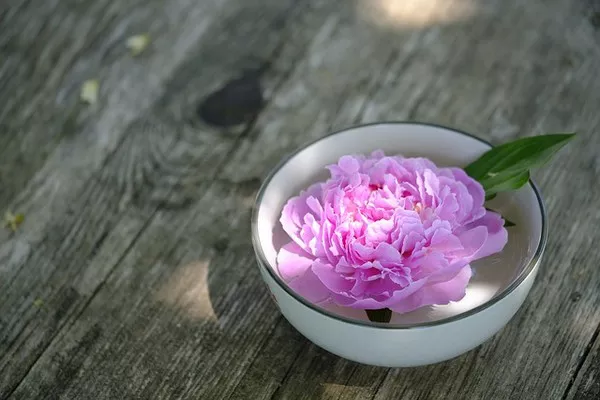Edible flowers have long been utilized in culinary practices around the world, adding not only visual appeal but also unique flavors and aromas to dishes. From delicate pansies to vibrant nasturtiums, these blooms offer a delightful twist to both savory and sweet creations. However, to fully harness their beauty and flavor, proper preservation methods are essential. In this comprehensive guide, we will explore the factors influencing the preservation of edible flowers, various preserving techniques, and essential tips to maintain their freshness and quality.
Factors Affecting Preservation Effect of Edible Flowers
Preserving edible flowers involves understanding the factors that can impact their freshness and flavor retention. Several key elements play a role in the preservation process:
1. Variety of Flower: Different types of edible flowers have varying moisture content, durability, and susceptibility to decay. Some blooms, such as calendula and lavender, are more resilient and suitable for preservation, while others, like delicate violets, require extra care.
2. Harvesting Stage: The stage at which flowers are harvested significantly influences their shelf life and flavor. Ideally, flowers should be picked when they are fully bloomed but still in their prime, ensuring optimal taste and texture.
3. Handling and Storage: Proper handling and storage are crucial for maintaining the freshness of edible flowers. Exposure to heat, moisture, or rough handling can accelerate wilting and decay.
4. Environmental Conditions: Environmental factors such as temperature, humidity, and light exposure can impact the shelf life of edible flowers. Storing them in optimal conditions helps prolong their freshness.
5. Pest and Disease Control: Preventing pests and diseases is essential for preserving the quality of edible flowers. Regular inspection and appropriate pest management techniques are necessary to avoid contamination.
Preserving Methods
Various methods can be employed to preserve edible flowers, each suited to different culinary applications and preferences. Here are some popular techniques:
1. Drying:
Drying is one of the oldest and simplest methods of preserving edible flowers. It involves removing moisture from the blooms, thereby extending their shelf life.
To dry flowers, gently tie small bunches with twine and hang them upside down in a dry, well-ventilated area away from direct sunlight.
Alternatively, flowers can be dried using a food dehydrator set to low heat. Spread the blooms in a single layer on the dehydrator trays and follow the manufacturer’s instructions.
Once dried, store the flowers in airtight containers away from heat and moisture. They can be used whole or crushed into flakes or powder for culinary purposes.
2. Freezing:
Freezing is another effective method for preserving edible flowers while retaining their color and flavor.
Begin by gently washing the flowers to remove any dirt or debris. Pat them dry with a paper towel.
Arrange the flowers in a single layer on a baking sheet lined with parchment paper and place them in the freezer until they are frozen solid.
Transfer the frozen flowers to airtight containers or resealable bags, removing as much air as possible before sealing.
Frozen edible flowers can be used directly in recipes or thawed before use. They are particularly suitable for garnishing cocktails, desserts, and salads.
3. Candying:
Candying involves coating edible flowers with a layer of sugar syrup, preserving both their appearance and flavor.
Prepare a simple syrup by heating equal parts water and sugar in a saucepan until the sugar dissolves completely.
Dip each flower into the syrup, ensuring it is fully coated, then place it on a wire rack to dry. Allow the flowers to dry completely, usually overnight.
Once dry, store the candied flowers in an airtight container layered between sheets of parchment paper to prevent sticking.
Candied flowers add a touch of elegance to cakes, pastries, and confections, enhancing their visual appeal and taste.
4. Infusing:
Infusing edible flowers into various mediums, such as oils, vinegars, or syrups, is a creative way to preserve their essence.
Begin by thoroughly washing the flowers and allowing them to dry completely.
Place the dried flowers in a clean, sterilized jar and cover them with the desired medium, such as olive oil, white vinegar, or simple syrup.
Seal the jar tightly and store it in a cool, dark place for several weeks to allow the flavors to infuse.
Once infused, strain the mixture to remove the flowers and transfer the infused liquid to a clean bottle or jar for storage.
Infused oils, vinegars, and syrups can be used in salad dressings, marinades, cocktails, or desserts, adding a subtle floral aroma and flavor.
Preserving Tips
In addition to choosing the right preservation method, following these tips will help ensure the longevity and quality of edible flowers:
1. Select Fresh Flowers: Choose fresh, pesticide-free blooms at their peak of perfection for the best flavor and appearance.
2. Handle with Care: Handle edible flowers gently to avoid bruising or damaging delicate petals.
3. Remove Stems and Pistils: Before preserving, remove stems, leaves, and pistils from the flowers as they can introduce moisture and hasten decay.
4. Avoid Moisture: Moisture is the enemy of edible flowers. Ensure that flowers are completely dry before preserving them to prevent mold and rot.
5. Store Properly: Store preserved flowers in airtight containers or resealable bags in a cool, dry place away from direct sunlight.
6. Label and Date: Properly label preserved flowers with the type of flower and the date of preservation to track freshness and usage.
7. Experiment with Combinations: Get creative with preserving methods and flavor combinations to enhance culinary creations and add a personal touch.
Conclusion
In conclusion, preserving edible flowers allows chefs and home cooks to enjoy their beauty and flavor year-round. By understanding the factors influencing preservation, choosing the appropriate method, and following essential tips, it’s possible to maintain the freshness and quality of these delicate blooms for a variety of culinary applications. Whether dried, frozen, candied, or infused, preserved edible flowers add a touch of elegance and sophistication to dishes, making them a delightful addition to any kitchen repertoire.


